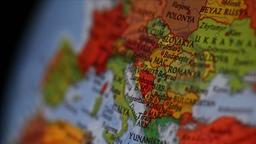Turkey could have been selling its Freebirds already if it had the determination and patience in regards to R&D.
Turkish Aerospace Industries (TAI) was established in 1984. Turkey was planning to buy F-16 aircrafts from the US for the Turkish Air Force. It is reported that Turgut Özal wanted a company that would assemble the parts of aircrafts to create a synergy in technology development. The TAI was hence established for the transfer of technology and started its operations in cooperation with Lockheed Martin.
Korea Aerospace Industries (KAI) was established in 1999. Korea had started purchasing F-16 aircrafts from the US around the same time as Turkey. The KAI was originally established in the late 1980s as a joint venture of Samsung, Hyundai, and Daewoo. Following the 1997 financial crisis, it was sort of taken over by the Korean government. The KAI has been developing and producing F-16s since 1991 and obtained its current structure in 1999. To make a long story short, the KAI, alike the TAI, was established for technology transfer in cooperation with Locheed Martin.
The TAI was established earlier than the KAI. In fact, an urban myth says that once the TAI received a phone call from Korea, which was attempting to establish an aerospace company to buy F-16s from the US. They asked if the TAI, as the older brother, could help Korea train engineers. It was the early 1990s. Turkey agreed and hosted Korean engineers in Ankara. Today, Korean engineers are able to produce their own domestic training and war airplanes, but Turkey is not. Both were established to facilitate domestic production via technology transfer. Both are currently state-owned. The younger of the two, KAI, however, has succeeded at selling training airplanes to Turkey.
Korea produced the T-50, its first domestic aircraft and one of the few supersonic training aircrafts on earth, in 2003. The production process took about three years. Later, in 2005, the Korean Air Forces began purchasing T-50s. Korea has succeeded at relying on its previous knowledge. The contributions of Samsung are worth mentioning, of course. In fact, the company still produces the engines for T-50s under the General Electric license.
The TAI has not wasted all of its time, of course. It has designed remotely piloted aircrafts and the Hürkuş (Freebird), a training aircraft like Korea’s T-50, and named after Turkish pilot and engineer Vecihi Hürkuş. These have had their maiden flights, as well. But the Hürkuş program was launched as late as 2006, about 22 years after the establishment of the TAI. The first Turkish aircraft had its maiden flight in August 2013, about 30 years after the establishment of the TAI and 11 years after Korea’s T-50 had had its maiden flight.
In the light of this information, let me derive a few conclusions: while the TAI is older than the KAI, and trained the first KAI engineers, as of today, the KAI has flown, but the TAI has not. The difference, if you ask me, lies in the different approaches to R&D and technological development. Turkey considers developing technology to be like growing tomatoes. You sow the seed, water the plant, make sure it gets enough sunlight, and you have your tomatoes. Technology, however, is purely manmade. It can’t grow on its own. It requires special care at each and every step of development. Yet, Turkey still lacks a technology development policy. The relevant agencies claim that they support each and every technology project, which in fact means nothing. If it hadn’t been for the T-50 technology development program, the KAI would not have been taken over by the Korean government. The story in Korea boils down to the determination and the patience of the state in regards to R&D. Turkey could have been selling its Freebirds, to the Turkish Air Force to begin with, already if it had the same traits.
The moral of the story is that developing technology is not like growing tomatoes.
This commentary was published in Radikal daily on 28.02.2014





